Videos Designed to Be Art Are Often Made to Be Presented
Often, when viewing an exhibition of prints, we'll look at the labels and notice the names of press media we don't fully empathize. What's the divergence betwixt a drypoint and an aquatint? Between a monotype and a monoprint? Between a lithograph and a linocut?
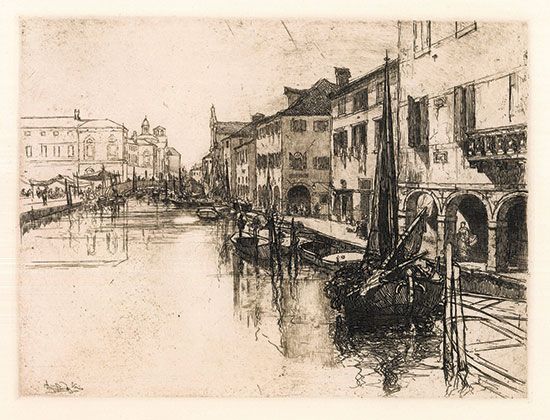
For starters, there are 4 traditional printmaking categories: relief (which includes such processes as woodcut and linocut), planography (lithography), serigraphy (silkscreen) and, finally, intaglio.
Beneath, creative person Richard Pantell walks u.s. through the final of these categories, intaglio, and its five principle processes. Bask!
Intaglio Explained
Originating in Italia, the word "intaglio," with a silent "yard," refers to prints made from plates in which the areas that conduct the ink are recessed below the surface of the plate. The plates are most often made of copper, but zinc, brass and other materials are too used.
The method of creating the recessed areas differs with the technique, and in a moment we'll learn how each one works. Only one time the plate itself is consummate, all 5 processes share the following steps to produce the finished intaglio print.
First, the creative person applies ink to the entire surface of the finished plate, often using a roller. The ink is then squeegeed across the plate, forcing the ink into every recessed line and area. The plate is so wiped with a rag chosen a tarlatan. This removes the ink from the raised portions of the plate, leaving simply the ink in the recessed areas to exist printed.
The plate is then placed onto the bed of an etching press, a rectangular steel slab. A dampened sheet of etching paper, larger than the plate itself, is laid on meridian. Two felt blankets are placed on tiptop of the paper.
The bed is and so cranked betwixt two steel rollers, pressing the blankets into the softened paper and forcing the newspaper down into the recessed areas of the metal plate, where it grabs the ink. Subsequently the bed comes to rest at the other end of the printing, the blankets are lifted off. The paper is removed to reveal the finished print, or impression.
The look of the terminal impress is affected by numerous factors, including the choice of ink, the method of wiping the ink from the plate and the pick of paper — in addition to the pick of printmaking procedure and the artist's treatment of the image. The contours of the plate leave an embossment on the newspaper chosen the platemark, and the rest ink on the surface is chosen plate tone.
Prints are unremarkably worked through an evolution called states, with the artist printing a sample impression, then working the plate further until it is completed, when the final proof is taken. At that indicate the plate is set for editioning— the cosmos of multiple impressions, which the artist signs and numbers.
At that place are five traditional intaglio processes: engraving, etching, drypoint, aquatint and mezzotint. Each produces prints with a distinct look and feel, and many prints are created through a combination of ii or more of these processes.
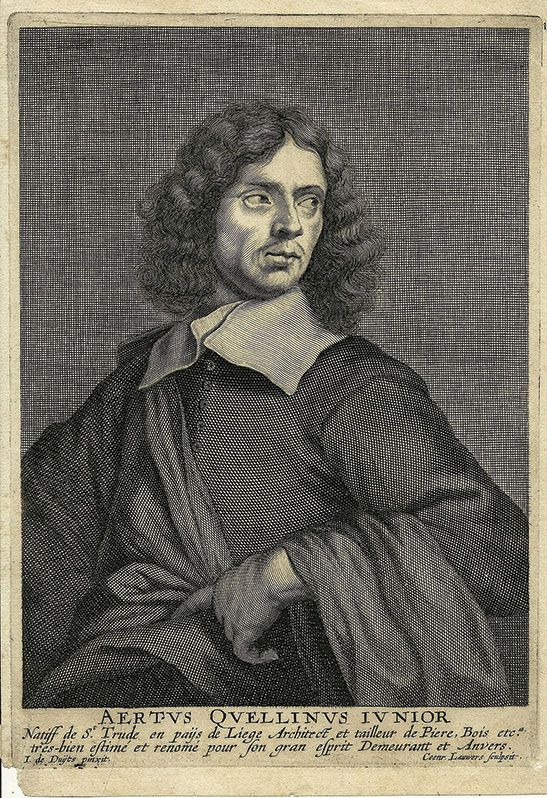
Engraving
Engraving was developed in the Eye Ages, making it one of the oldest printmaking processes. The artist creates lines past cutting into the copper plate using a tool called a burin . It requires patience, forcefulness and practice.
Curved lines are created not by pushing the burin in a new management, but by turning the plate while pushing the
Burins are bachelor in several sizes, but even a single burin volition give the engraver great control over the line. The tip of the burin is diamond-shaped. As the pointed tip is pushed deeper into the copper, the line becomes wider.
Every bit the cutting finishes, the line becomes thinner, much like the line of a crow-quill pen. Engravers create much of their tone using this thin-to-thick-to-sparse approach.
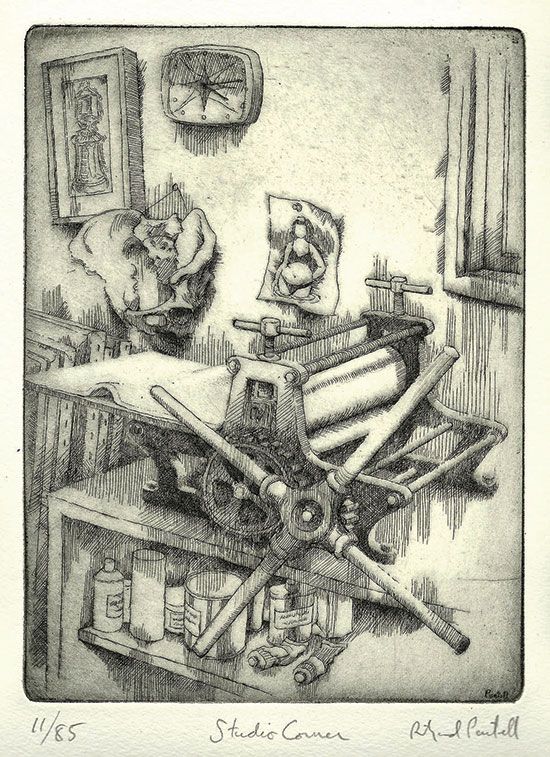
Etching
Etching dates dorsum to the early on 1500s. Traditional carving is still adept today, as are a large number of derivative techniques developed since so. In sharp contrast to the painstaking medium of engraving, etching is very fluid and spontaneous.
At the start of the process, the metal plate is coated with a thin layer of an asphaltum-based, acrid-resistant substance called etching ground. Using an carving needle, the artist draws lines through the ground, exposing the metal. The plate is then lowered into a mild acid bath where the exposed areas are etched, or bitten, by the acid, leaving them recessed beneath the surface of the plate.
The longer the plate is left in the acrid, the more metal is eaten away, resulting in deeper and darker lines. Multiple bites are often used to create a variety of line thicknesses. Unlike an engraved line, an etched line more often than not maintains the aforementioned thickness from get-go to finish.
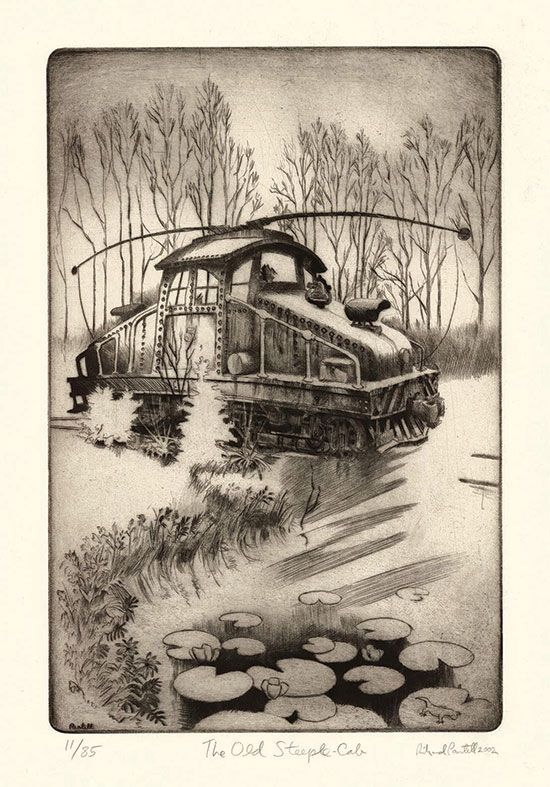
Drypoint
Like etching, drypoint involves fluid and spontaneous cartoon. Unlike carving, it does not involve acid. Used since the early 1600s, the technique involves scratching the image directly onto the surface of the plate with an etching needle or a diamond-pointed needle.
As the needle makes a shallow marker below the surface of the plate, it also raises a thin ridge of metal called a burr. The burr holds nigh of the ink, rather than the recessed line itself.
Drypoint produces a warm, soft line with a small amount of ink reaching abroad from the line. Drypoint lines, like engraved lines, range from thin to thick to thin over again, simply they possess a softness not found in engraving.
Due to friction from wiping the plate, burrs break downwards quickly and can only exist pressed a few times. To enable the printing of a large edition, the artist must utilise a process called steel facing to make the surface of the plate more permanent.
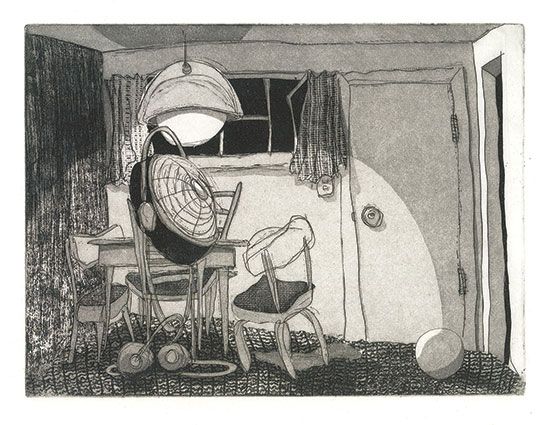
Aquatint
Aquatint, developed in the 1600s, is actually a variation on carving. However, information technology is used to such a loftier degree and includes so many variations of its own that it is widely considered its own medium.
Information technology differs from line carving in being primarily a tonal process, somewhat like to commercial halftone printing, which uses pocket-sized dots to create tones. In the case of aquatint, tone is created by pocket-sized, nearly microscopic light dots inside the dark field. Aquatints are often combined with traditional line etching or other carving techniques.
The artist begins an aquatint by dusting the plate with fine rosin pulverisation. The plate is heated until the powder melts into droplets that adhere to the plate. These droplets are acrid-resistant and protect small, relatively evenly distributed dots on the plate when it is lowered into the acrid bath. When the plate is printed, this results in tiny light dots inside fields of ink, which our middle reads as even tone.
To craft the paradigm, before submerging the plate into the acrid the artist paints the areas where no tone is desired with an acid-resistant substance chosen asphaltum, or stop-out. The plate is then submerged into acid and bitten.
The longer information technology is left in the acrid, the deeper and darker the resulting tone. The plate is removed from the acid, rinsed in water and dried. In nearly cases, the artist then repeats the process, painting more areas with stop-out to preserve them at the electric current tone, and so re-submerging the plate in acid, producing nonetheless darker tones in the unprotected areas.
Aquatint tones are even and apartment but tin be altered by burnishing or by utilizing other etching techniques. Areas can also be made to fade from light to dark past slowly sliding the plate into the acid bathroom. The areas that are submerged first spend more fourth dimension in the acid, making them darker than the areas that are submerged concluding.
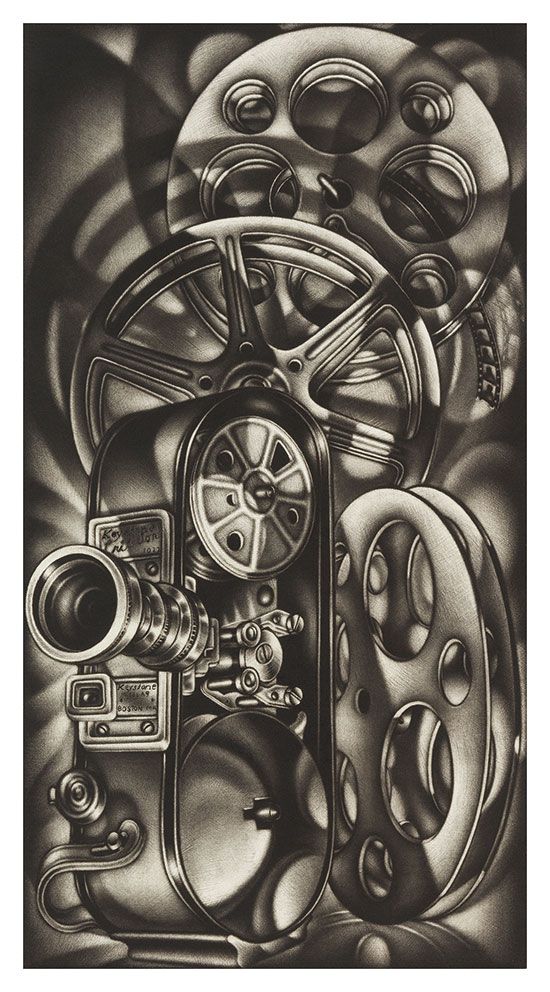
Mezzotint
Mezzotint has a known inventor: Ludwig von Siegen (1609–ca. 1680), of Amsterdam, who adult the process in the 1640s. It is the only intaglio process that is worked entirely from dark to light. It produces unique velvety tones that can appear quite painterly.
The creative person begins by preparing the metal plate to print as an even dark field. This is done through a tool called a rocker, which has a handle on the elevation and a curved, serrated metallic bottom containing teeth.
The artist grasps the handle firmly and rocks the tool beyond the surface of the plate in a tight, orderly fashion. The plate is rocked in multiple directions, 1 at a time. The teeth pierce the surface of the plate, creating endless small indentations to concord the ink. If a fully rocked plate is inked and printed, a solid blackness prototype will appear.
The creative person creates the epitome using a selection of metal tools called burnishers and scrapers to smoothen the textured plate. Burnishers tin can be used for everything from soft tones to sharp lines and edges. Areas that are glassy more retain less ink during printing and vice versa.
This article offset appeared in a past event ofDrawing magazine.Yous tin peruse through past problems hither.
espinozamationsills2000.blogspot.com
Source: https://www.artistsnetwork.com/art-mediums/drawing/intaglio-explained/
0 Response to "Videos Designed to Be Art Are Often Made to Be Presented"
Enregistrer un commentaire